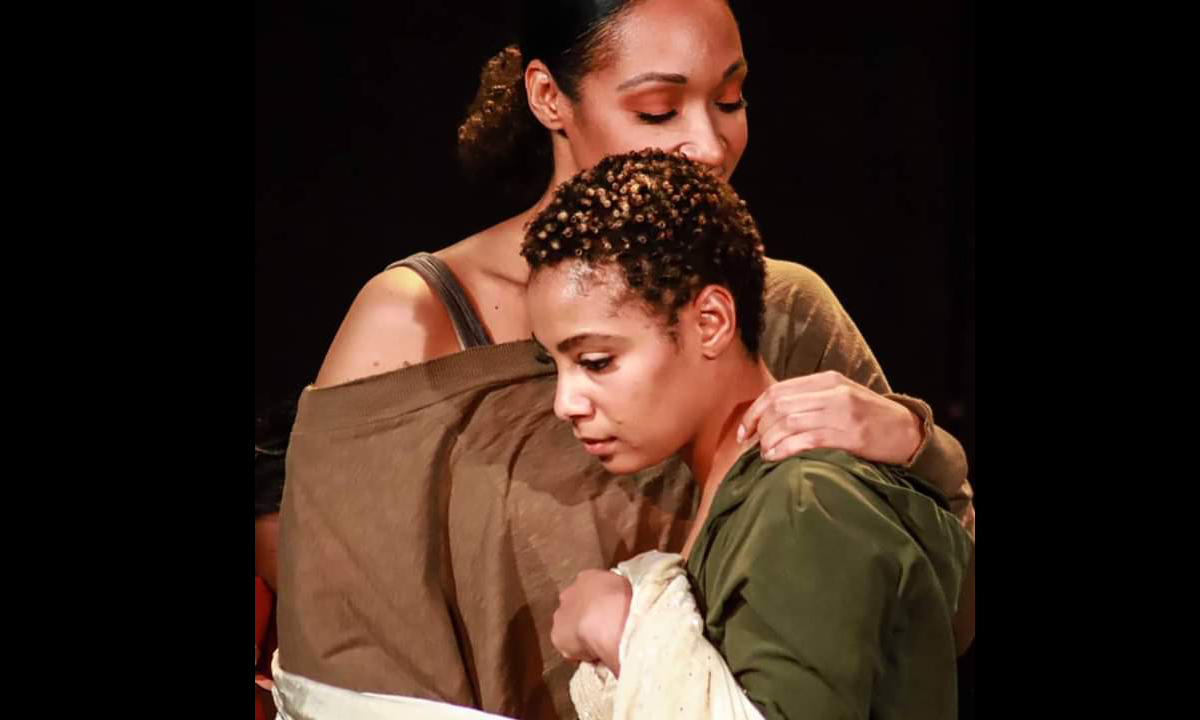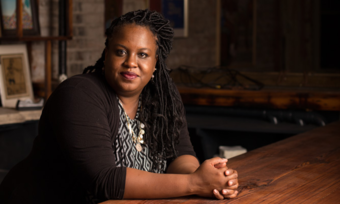Searching in the Desert
In my initial search through several websites of companies leading the charge in the intimacy direction field, I saw no people of color in leadership. I was inspired to reach out to several organizations about this because while I was so impressed with the field being brought forth, I also saw that the optics of all-white leadership was problematic and that the lack of diversity was a glaring Achilles’ heel. Recently I went to an informative multi-day training held by Intimacy Directors International (which has since dissolved) all the way across the country to the Eugene O’Neill Theater Center in Waterford, Connecticut. I then did another weekend training with Theatre Intimacy Education (TIE) here in Los Angeles, California. After experiencing firsthand how beneficial this work could be to theatre practice, I felt called to offer an affinity space outside the white gaze called Intimacy Directors of Color (IDOC) in a few online theatre groups for people of color. I was interested in knowing if other theatre artists of color felt the same about the training being centered in white feminist culture; it seemed to me that by collecting solid data, the issues could be better addressed. I was shocked by the four hundred-plus likes and over forty emails I received in less than twenty-four hours.
We need to look at why intimacy direction is still so very white while the movement it sprang from was birthed by a Black woman.
While intimacy direction as a career choice should be more accessible to all, access to training seems to be a main stumbling block of entry for qualified and experienced actors, directors, and educators of color. While high prices for training may be a factor, inaccessible training locations and sporadic online classes are also part of the challenge. Taking time off to train with an instructor—sometimes for days—can be considered difficult to achieve for working professionals.
Through the discussions I had, I also discovered something else very telling about people of color who value intimacy direction: while there are dozens of interested artists of color who want the training and have the ability to travel and pay for it, most expressed their concerns about not feeling comfortable being trained by white people. Simply put, we want training from people who look more like us. We want to ensure the physical and mental well-being of our own communities; to be trained and/or directed outside the white gaze. One MFA student who responded to me said: “As a POC, there definitely needs to be more visibility for other POCs in these spaces,” while a tenured professor mentioned: “I’ve been interested in intimacy direction but the few people who have done it out here have not been POC and I would feel a bit more comfortable with coordinators who understand us.”
For those who ask: “Will intimacy directors of color be qualified to train and direct for white people?” I say yes. I say yes because we have been steeped in white culture for four hundred years. But do white people know our stories and culture as well? What can be done to be more transparent and diverse in intimacy training and hiring practices so that people of color have the same protection and freedom as white theatre artists to tell the stories we want to tell? “A lot of this work on theatrical intimacy is focused on the female body as particularly vulnerable, but consider the position that my Black male students have been put in time and again,” wrote Kaja Dunn, a scholarly colleague in the intimacy direction field, in the Journal of Dramatic Theory and Criticism. “People can see the violent impacts of the patriarchy on women very clearly but don’t see the ways that white women sometimes perpetuate that patriarchy in a racialized way with Black men.” People of color have earned the right to be investigated, celebrated, and protected on stage through proper time and research into what makes us behave, act, and react the way we do in intimate situations, and I believe that intimacy directors of color are uniquely and especially qualified to bring these perspectives and experiences to light.
We want to ensure the physical and mental well-being of our own communities; to be trained and/or directed outside the white gaze.
Over the past six months I have been engaging in lots of conversations on the topic, including serving on a panel for intimacy direction and people of color for the Los Angeles Stage Alliance and as a panel moderator for Society of Directors and Choreographers Foundation when they came to Los Angeles to hold an intimacy workshop and to discuss ways that artistic directors would make space for intimacy directors moving forward. In this short time, I have been asked the same questions many times over: “How can I get work being an intimacy director if I can’t get a good reference from someone I have trained with?” Conversely, “How can I get good training if I can’t find out about an upcoming class through a friend in the know?” and “I don’t know when classes are, or when I find out they are already sold out” and “Is there anyone Black who teaches a class for people of color only? I would feel better about that.” To date I know of no classes being offered for people of color by people of color. The representation of people of color in leadership needs to expand as soon as possible—hopefully with the support of my organization, and other more established groups and individuals in the field.
Embracing Change
From my in-depth conversations with leading intimacy direction instructors, there is an unfortunate aroma of gatekeeping. I have heard certified instructors say they just “don’t know where to look for people of color to train” or that there “just isn’t enough work to go around.” As the field expands, there must be less focus on the concept of scarcity. Intimate and at times traumatic stories will continue to be told on stage. The demand for more trained intimacy directors of color will grow as more theatre companies speak out about their preference for these individuals in their rehearsal rooms. With Intimacy Directors of Color, I want to begin framing more culturally accessible methods of intimacy training so that these productions can hold space for the health and safety of actors of color.
Reformation can’t be a knee-jerk reaction out of guilt or else the fractures it causes may bring the whole house down.
Then there is tokenism. Rushing to place people of color in leadership positions with limited research into what it means to lead an organization in an anti-racist direction will not promote lasting systemic change. It would be a pity to dilute the work that could actually be done to organically make the field diverse by quickly pushing dedicated people of color up in the ranks to manufacture positions of leadership. Reformation can’t be a knee-jerk reaction out of guilt or else the fractures it causes may bring the whole house down.
There are several progressive options to consider when it comes to being more focused on promoting acceptance of leaders of color in intimacy direction. In a more holistic development of the industry, and to create a healthy and much-needed pipeline to intimacy direction as a career, greater institutional support should go to historically Black colleges and universities through their arts programs. Board members should embrace and demonstrate a commitment to company sensitivity trainings and judiciously hire “new world artists” who see the value of telling stories with holistic care of their acting companies in mind. Eventually, there should be qualified intimacy directors of color on contract at every LORT house, and groundbreaking organizations like TIE and IDC will hopefully work harmoniously and more closely with IDOC and like-minded organizations to fill the vacuum in this very white leadership space.













Comments
The article is just the start of the conversation—we want to know what you think about this subject, too! HowlRound is a space for knowledge-sharing, and we welcome spirited, thoughtful, and on-topic dialogue. Find our full comments policy here
Issues of white dominance in "Intimacy Direction" current leadership also just came up on the LMDA Dramaturgy listserv, where i noted, as a "disabled and trans person, i observed ableist framing and hyper-normative body expectations conveyed by the facilitator of the [brief ID] training i attended, a white (and cis, and athletic) ID reputable in the field--which i then had to make note of to her, so she could reconsider these framings." Limited perspectives need expanding; as called for by this author, "theatre must be created holistically." Thanks for the article!
I had this very conversation with an producer who wanted me to have an intimacy director assigned to a play I am going to be directing. It concerned me that I should be asked to collaborate or "power - share" with a white woman as I try to make a production of this black story with a black cast. As a black, queer, female director, I have my own issues with the concept of an intimacy "director" but to co-mingle it with race without thinking is the norm and truly not helpful.
Thank you for sharing this!